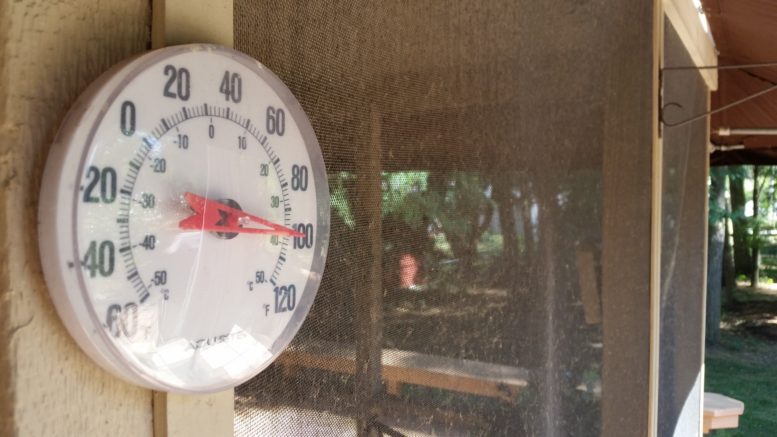By JAN LARSON McLAUGHLIN
BG Independent News
The strings of hot days this summer have not only led to some discomfort, but they will also result in some higher electric bills for local residents.
This past July finished in the top 20 percent of the hottest months for Ohio – with every day from July 5 through July 31 hitting above normal temperatures.
Consequently, Bowling Green electric customers used 53 million kilowatt hours in July, which is a 21 percent increase from two months ago in May, and which surpassed July of 2012, one of the hottest months on record.
“That is pretty high for us,” Bowling Green Utilities Director Brian O’Connell said of the kilowatt hours used.
The high usage will not only result in high electric bills for the summer, but will also lead to increased rates next year.
Bowling Green’s electric rates are based on a transmission charge and a capacity charge, O’Connell explained. The transmission charge for next year will be calculated based on the city’s peak energy consumption this year.
The capacity charge is based on the average of a particular hour of electric usage during the top five peak days. That may not seem like a fair formula, O’Connell said, but that’s how rates are calculated.
Bowling Green’s electric sees the greatest demands and peak days in hot weather since electric powers residential, commercial and industrial air conditioning.
In the winter, many homes in the city area heated by natural gas, so the demands on the city’s electricity are not as great, O’Connell said.
There is no risk that the city won’t be able to handle the electricity demands, he added. And there aren’t any risks of blackouts or rolling brownouts due to the peaking power usage.
The problem isn’t that power won’t be there when needed – it’s that the rates will go up for next year when Bowling Green hits peak usage on extremely hot days this year.
Earlier this summer, the city asked residents to conserve power in order to avoid rate increases. Customers are being asked to continue cutting back on electricity use whenever possible during the peak hours of 2 to 6 p.m. on extremely hot days, so the city can save on electricity costs next year, O’Connell said.
“When customers can cut back on peak days, that can reduce the charge for next year,” O’Connell said.
“If a customer could not do laundry, or turn up the air conditioning a couple degrees,” he said. “Those kind of things can help.”
To conserve energy during peak hours, customers are being asked to:
- Shut off lights when not needed.
- Unplug small appliances and electric chargers.
- Raise air conditioner thermostats a degree or two.
- Close curtains, drapes and blinds.
- Hold off on laundry and other household chores requiring electricity.
- Turn off televisions, computers, gaming consoles and other electronic devices when not being used.
The solar field being built northeast of Bowling Green should help with the electric demands, O’Connell said. The solar array will produce the most energy on sunny days, when local customers are most likely to need air conditioning to cool their homes. The energy created by the solar field will drive down the load needed from other sources.

